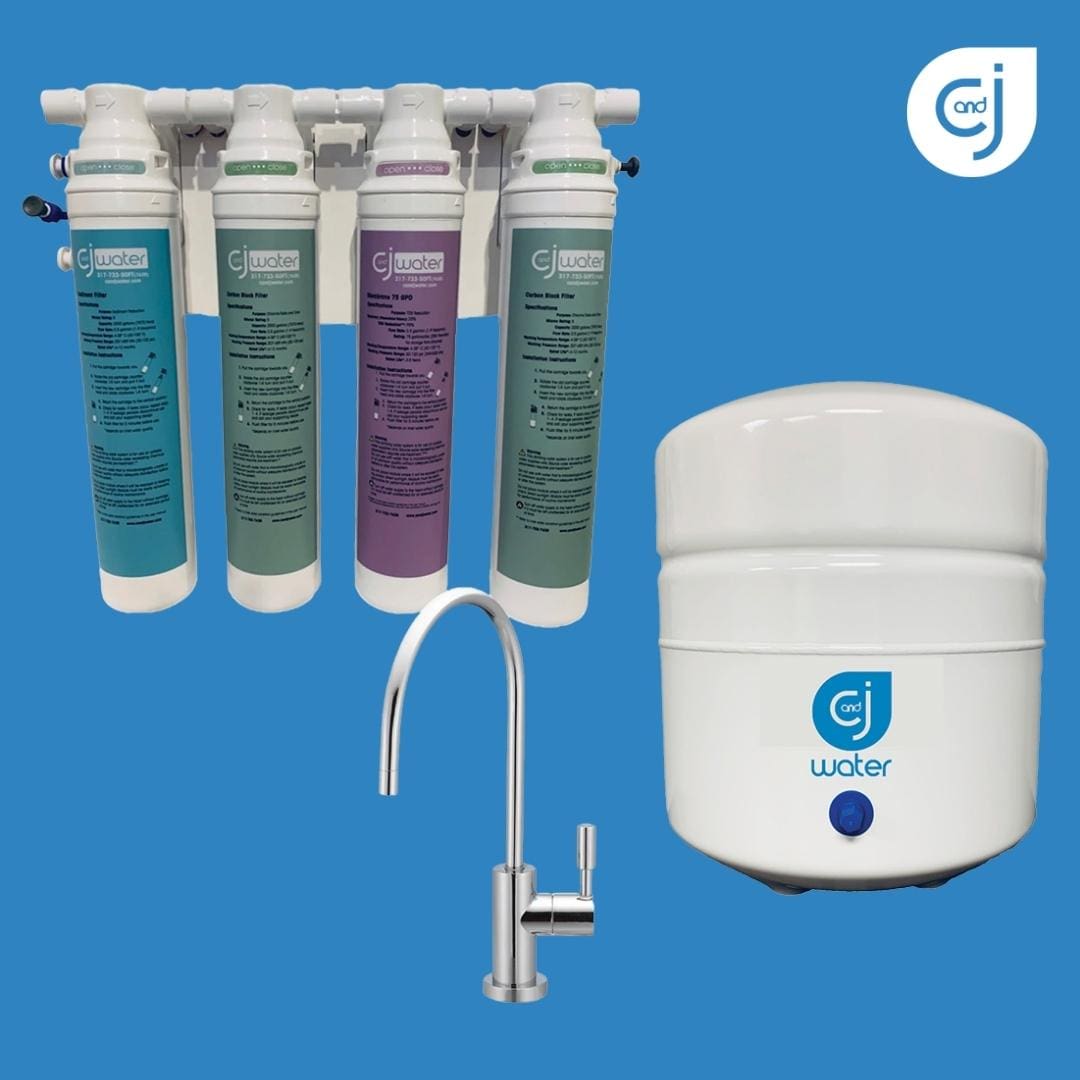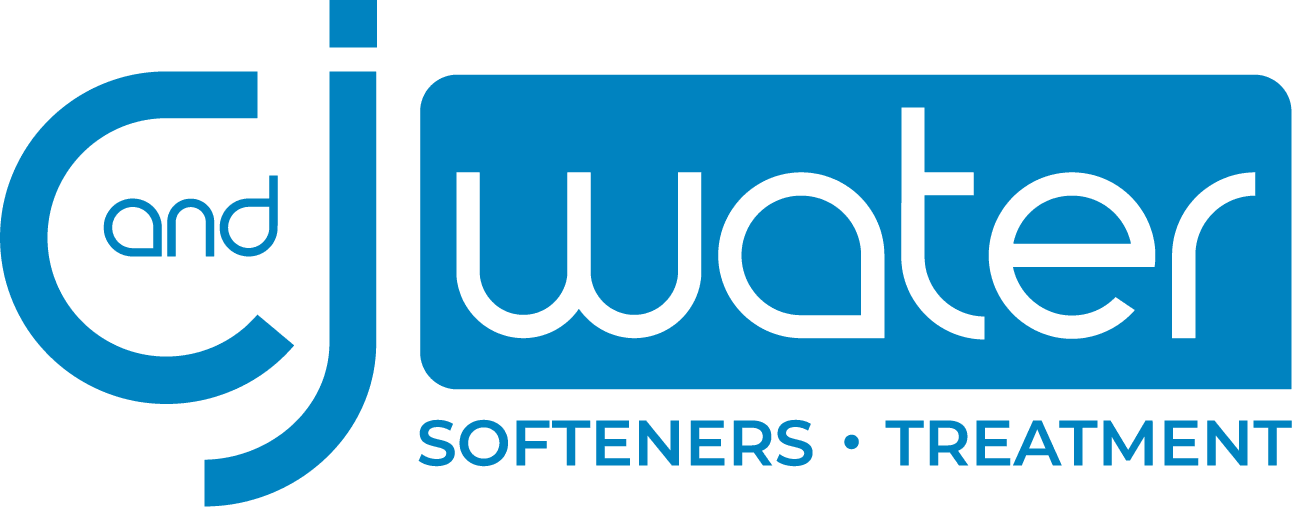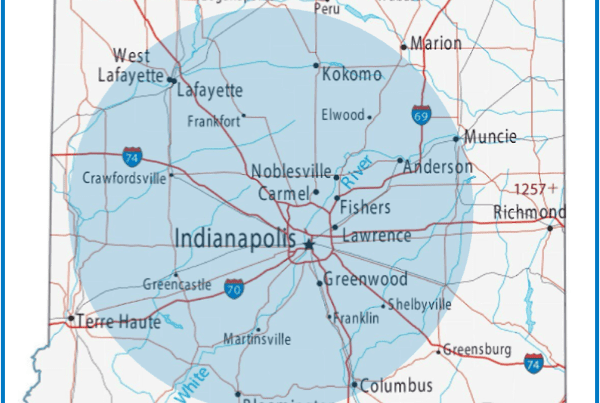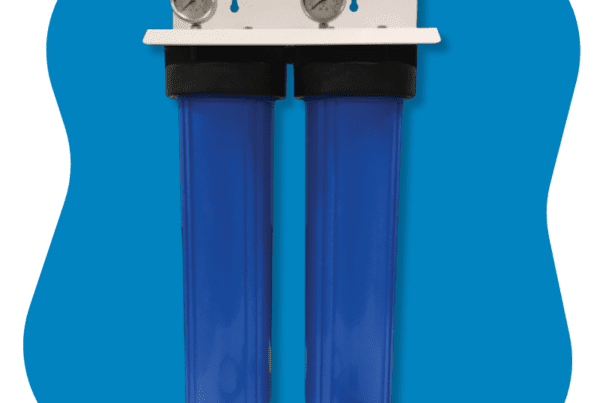Does a Reverse Osmosis System Pair with a Water Softener?
Reverse osmosis and water softeners are two of the most popular methods for purifying water. Both have pros and cons, but which one is best for you? Reverse osmosis is a process that forces water through a semipermeable membrane, leaving impurities behind. This process can remove up to 99% of contaminants, making it one of the most effective water purification methods. On the other hand, water softeners work by exchanging ions in the water with ions from a salt solution. This process removes hardness minerals from the water, making it softer. So, which one should you choose? This is actually a false choice—you probably need both.
What is Reverse Osmosis?
 Reverse osmosis is a very effective way to purify water and is also very efficient. Reverse osmosis can remove up to 99% of impurities from water. Reverse osmosis is also very versatile. It can be used to purify both fresh water and salt water. Reverse osmosis can also purify water for different purposes, such as drinking, cooking, or industrial use. Reverse osmosis is a water purification technology that utilizes a semipermeable membrane to remove ions, molecules, and larger particles from water. The first reverse osmosis membrane was developed in 1748 by a Swiss scientist named Daniel Bernoulli. Bernoulli’s membrane was made of parchment paper and was used to purify water for medical purposes. In the early 1800s, the first commercial reverse osmosis plant was built in England to purify seawater for use in textile manufacturing. In the early 1900s, the first reverse osmosis plant for desalination was built in the United States. Since then, reverse osmosis has been used extensively for water purification and desalination. Today, there are thousands of reverse osmosis plants in operation around the world, and its technology has even expanded into the residential market.
Reverse osmosis is a very effective way to purify water and is also very efficient. Reverse osmosis can remove up to 99% of impurities from water. Reverse osmosis is also very versatile. It can be used to purify both fresh water and salt water. Reverse osmosis can also purify water for different purposes, such as drinking, cooking, or industrial use. Reverse osmosis is a water purification technology that utilizes a semipermeable membrane to remove ions, molecules, and larger particles from water. The first reverse osmosis membrane was developed in 1748 by a Swiss scientist named Daniel Bernoulli. Bernoulli’s membrane was made of parchment paper and was used to purify water for medical purposes. In the early 1800s, the first commercial reverse osmosis plant was built in England to purify seawater for use in textile manufacturing. In the early 1900s, the first reverse osmosis plant for desalination was built in the United States. Since then, reverse osmosis has been used extensively for water purification and desalination. Today, there are thousands of reverse osmosis plants in operation around the world, and its technology has even expanded into the residential market.
As mentioned above, reverse osmosis is a filtration system designed to remove organic and inorganic dissolved solids that a water softener cannot. RO removes metals like arsenic, aluminum, copper, lead, chromium, and many others. It also removes inorganic forms such as nitrates, phosphates, chlorides, sulfates, and more. RO works by forcing water from your home’s supply through the RO membrane. This membrane contains thousands of tiny holes, just large enough to allow water molecules to pass through. Anything bigger than a water molecule is trapped and cannot fit through the membrane.
RO units are available at local hardware stores, and you can install them in your home if you have adequate plumbing skills. C and J Water offers a premium 4-stage Reverse Osmosis System that is a great solution for water used for drinking and cooking.
Stage One—Sediment Filter
The sediment filter screens out particulate material, such as dirt, sand, or rust, which may clog the other filters in the system. Various micron size filters are available.
Stage Two—Activated Carbon Block Prefilter
The activated carbon prefilter reduces chlorine, which may damage the RO membrane filter. It also reduces elements that cause water to taste and smell unpleasant, including chlorine taste and odor.
Stage Three—RO Membrane
Reverse Osmosis membrane provides up to 99% Total Dissolved Solids (TDS) rejection. The membrane is what separates the water from the non-water.
Stage Four—Activated Carbon Block Polishing Filter
The polishing filter absorbs any residual tastes & odors just before the water is delivered to a holding tank and then through the faucet.
Water Reservoir Tank and RO Faucet
A durable, high-quality, powder-coated steel tank ensures you’ll have a plentiful supply of refreshing water. The automatic shutoff valve shuts off the system when the reservoir tank is full. Various size tanks are available based on your needs. The RO faucet mounts directly to your sink or countertop, providing a dedicated tap for RO filtered water. Multiple styles and colors are available.
Reverse osmosis is a safe and reliable way to purify water. It is also an environmentally friendly process, and reverse osmosis does not produce any toxic waste products.
What is a Water Softener?
Dissolved minerals in the water cause water hardness. The two most common minerals are calcium and magnesium. Hard water is not a health hazard, but it can be a nuisance because it can cause scale buildup on plumbing and clothing. Hard water can also make it difficult to get suds when washing with soap.
The hardness of water is measured in grains per gallon (gpg) or milligrams per liter (mg/L). Water with more dissolved minerals is harder. The hardness of water might be temporary, and it can change with the seasons or from one water source to another.
Water hardness is not caused by dirt or pollution. Hard water is often considered to be better quality water because it contains minerals that are good for your health. The only downside to hard water is the inconvenience it can cause.
 Water softeners literally soften water, by removing certain minerals. In most cases, this means excess calcium and other minerals, naturally occurring elements often found in well water but also present in many municipal water supplies. While these minerals aren’t necessarily bad for your health, when they build up in your plumbing, they cause all sorts of household issues.
Water softeners literally soften water, by removing certain minerals. In most cases, this means excess calcium and other minerals, naturally occurring elements often found in well water but also present in many municipal water supplies. While these minerals aren’t necessarily bad for your health, when they build up in your plumbing, they cause all sorts of household issues.
Saltwater softeners extend the life of your appliances by stopping mineral deposit buildup. They save money, using up to 50% less soap and detergents. Water softener systems keep your hair shiny and soft, keep your skin moisturized, keep your clothes brighter, and make taking showers more enjoyable. Soft water systems are gentle on plumbing and don’t cause rust damage in sinks, tubs, dishwashers, and washing machines.
Single Tank Softeners
The most common and conventional type of water softener is the single tank water softener. It relies on a salt brine, like that saltwater you used to gargle for a sore throat when you were a kid. This system replaces the hard minerals (calcium, potassium, magnesium, iron, etc.) with sodium, which is softer. You won’t taste the sodium, of course, but you’ll “feel” it in terms of better soap lather, softer skin, and cleaner dishes. Salt-based water softeners will also help extend the life of your home’s water heater.
Twin Tank Softeners
Conventional water softeners need to regenerate from time to time. This typically happens overnight when everyone at home is asleep, and there is no water demand. If freshwater demand persists in your home at all hours of the day and night, you might want to consider a dual tank system. When one tank is offline regenerating, the other tank kicks in, and vice-versa. Dual-tank softeners are handy for larger families or folks who work day and night shifts.
Should They Go Together?
As previously mentioned, RO filters out basically everything, but removing as much as possible before the water gets to the RO will extend the life of your filters and membrane. Think of your RO system as a motor vehicle that needs oil and tire changes, alignment, brake pad replacements, etc., to prevent breakdowns and continue running smoothly. Unless the car is maintained regularly, it can develop expensive mechanical problems, often leading to catastrophic failure. Similarly, your RO system’s performance will decline over time, rendering it useless if it’s not maintained adequately. Should this happen, your drinking water would likely become a playground for potentially harmful pollutants, such as bacteria, chlorine, PFAS chemicals, pesticides, lead, copper, etc.
One of the best ways to make your RO system maintenance easier is to pair your reverse osmosis system with a water softener. The troublesome minerals in hard water can strain the RO filters and reduce their lifespan. However, a quality water softener removes these minerals before they reach the RO filters.
This summer, C and J Water have paired these two great solutions into one great special deal—when you buy ANY water softener, we will install a FREE reverse osmosis drinking water system. Also, if you need any other treatment equipment, we are offering 10% off (nonstackable with other offers). We have made it easier than ever to have quality water for a home for years to come—contact us today!




